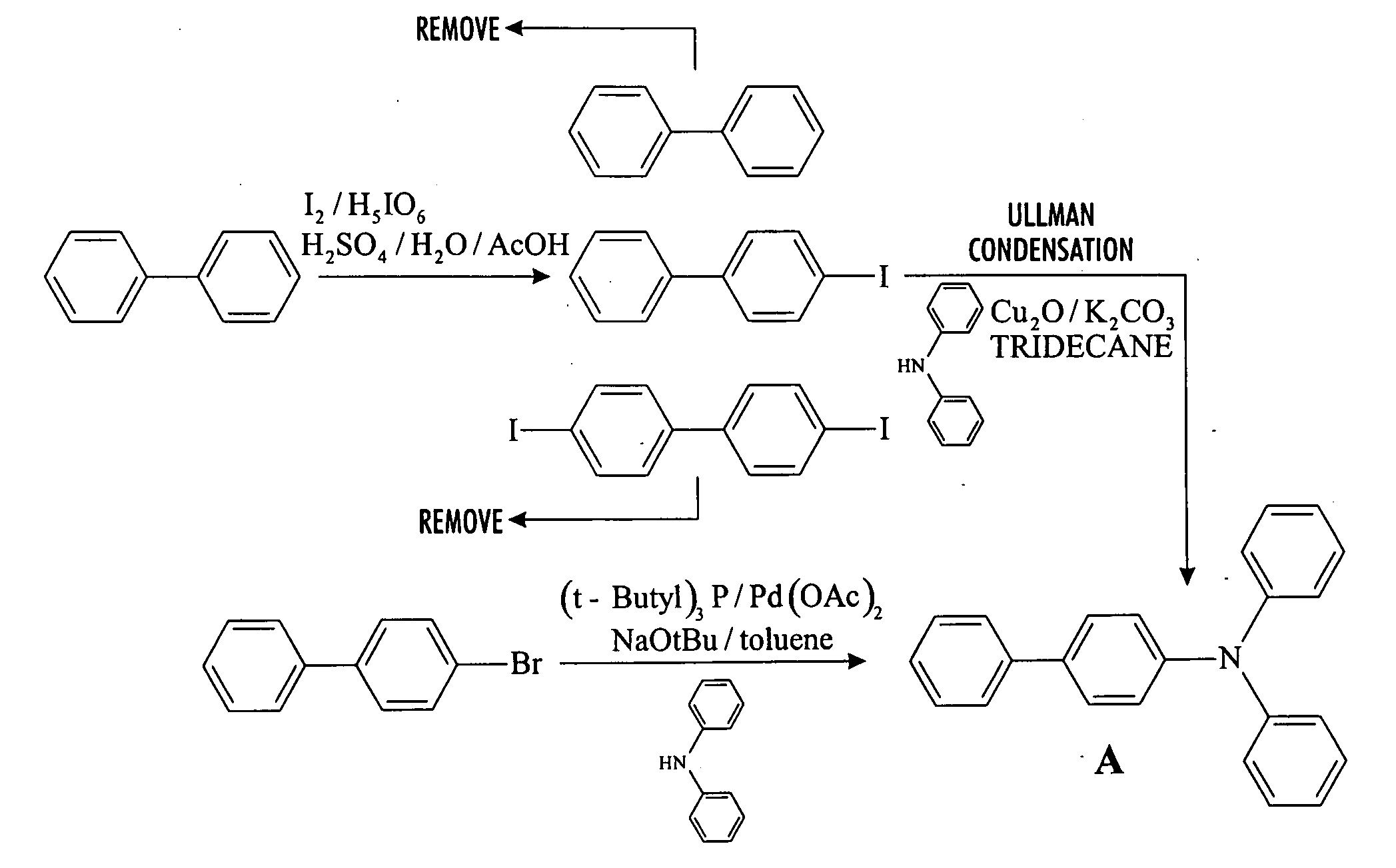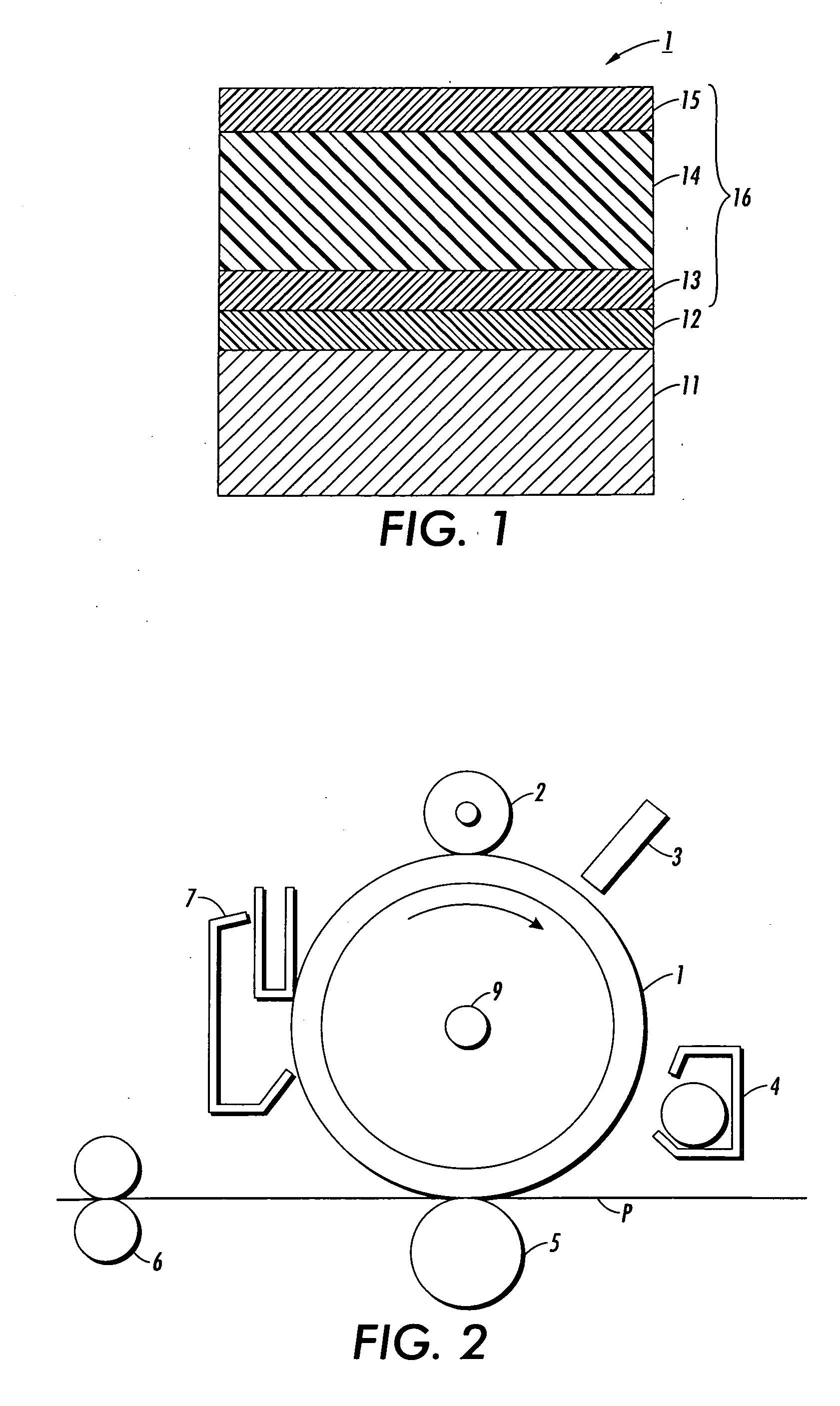Process for arylamine production
a technology of arylamine and arylamine, which is applied in the field of improved chemical processes for the synthesis of arylamine compounds, can solve the problems of inability to use in a manufacturing/industrial setting, unable to achieve the effect of reducing the cost of production,
- Summary
- Abstract
- Description
- Claims
- Application Information
AI Technical Summary
Problems solved by technology
Method used
Image
Examples
example 1
Preparation of Arylamine Intermediate
[0126] To a 2 L flask fitted with mechanical stirrer, argon inlet and reflux condenser is charged palladium(II)acetate (1.57 g, 5 mol %) and 226 mL of tri-t-butylphosphine stock solution (5 g tri-t-butylphosphine in 1 L toluene). The solution is stirred for 1 hour to allow for dissolution of palladium acetate. Then sequentially, 4-bromobiphenyl (164 g, 1.0 equiv), diphenylamine (130 g, 1.05 equiv), toluene (410 mL) and sodium t-butoxide (127 g) are added with stirring. The reaction is heated to 70° C. over a 30 min period. A large exotherm is observed and the heating is shut off. After 1 hr 15 min the exotherm subsides and HPLC analysis confirms complete conversion of diphenylamine to N-biphenyl-diphenylamine.
[0127] Following completion of the reaction, toluene (200 mL) is added and the solution is filtered to remove insoluble materials. The solids are washed with toluene so as to have a final liqueur with a volume of 2 L. This solution is trea...
PUM
| Property | Measurement | Unit |
|---|---|---|
| time | aaaaa | aaaaa |
| humidity | aaaaa | aaaaa |
| temperature | aaaaa | aaaaa |
Abstract
Description
Claims
Application Information
 Login to View More
Login to View More - R&D
- Intellectual Property
- Life Sciences
- Materials
- Tech Scout
- Unparalleled Data Quality
- Higher Quality Content
- 60% Fewer Hallucinations
Browse by: Latest US Patents, China's latest patents, Technical Efficacy Thesaurus, Application Domain, Technology Topic, Popular Technical Reports.
© 2025 PatSnap. All rights reserved.Legal|Privacy policy|Modern Slavery Act Transparency Statement|Sitemap|About US| Contact US: help@patsnap.com



